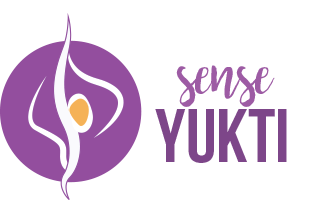
We live in a demanding society where we feel sometimes being pushed to the edge of our limits. We look like chicken running with no heads all over the place, holding back-to-back pointless and long meetings, operating beyond regular business hours to meet projects deadlines and keep upper management happy. Such attitude would likely lead to mental and physical health deterioration. Such attitude would likely lead to absenteeism. Such attitude would likely lead to burnout. But prior to these, there is a critical stage that is less known to many people and businesses that is called Presenteeism.
Presenteeism occurs when employees show up at work but are distracted by personal emotional and/or physical issues, which results in limited job performance and productivity.
Although it is often not measured as closely as absenteeism, presenteeism is a major issue in the workplace today. The term was coined in the 1990’s by professor Cary Cooper, a psychologist specializing in organizational management at Manchester University in the UK. According to a study published in “the Journal of Occupational and Environmental Medicine” in US, employees reported going to work in spite of illness 50 percent of the time. It is estimated that the costs of presenteeism in Canada is 7.5 times greater than the costs of absenteeism. For example, if a company has 150 employees and salary costs totalled $6,240,000.3 Absenteeism would cost the employer about $187,200 while presenteeism would cost about $1,638,000.[1] In a paper published in the Harvard Business Review, the author states that presenteeism may be a $150 billion problem in US. [2] Various other studies evaluate presenteeism costing Canadian economy $15 to 25 billion each year, the Australian economy $9.96 billion per year and the UK economy $25 billion per year.[3] These figures are unbelievable. These figures are staggering. These figures are alarming!
Presenteesim is ubiquitous in time of economy downturn where jobs are scarce and in people with children, middle managers and front liners who have hard time setting boundaries when confronted with excessive demands. Heavy workload was found to be the most important predictor of increased presenteeism: employees are not equipped to deal with such stressful situations: they do not use sick days due to various countries and corporations policies and rather avoid utilizing their limited vacation days. In addition to this, most corporations are not aware of the matter and thus cannot educate workers. They have a misconception of presenteeism impact on their bottom line as they only concentrate on ways to reduce and cut costs. They view staff members as resources (not sources) such as coal, petrol, (you use it and it’s gone).
The best way to reduce presenteeism within the workplace is by building hale and hearty habits, a happiness hallmark for all employees:
– Health and wellness programs: This means encouraging employees to focus on key health behaviors such as increasing physical activity and improving eating habits. Every employee can find a sport activity that matches his or her personality from gym, swimming to yoga classes. Many organizations offer discounted rates for fitness clubs and often times carry free yoga classes. Wellness programs benefits include reducing health care costs, health-related absences, improving employee morale and retaining employees. It notably reduces presenteesim and elevates productivity in the long run.
– Mindfulness training and coaching programs: It is acknowledged by a grand number of employers that comprehensive mindfulness meditation training is beneficial for both employees’ health and the company’s bottom line. Mindfulness consists of emotion regulation training by observing everything in the realm of experience including our thoughts and feelings. Neuroscience has showed that mindfulness is effective in reducing stress, depression, anxiety and in increasing creativity and productivity. Mindfulness expenditure is very minimal compared to presenteeism opportunity cost.
Few companies acknowledge employees as sources, not resources and treat them accordingly. Whole Food, Patagonia, Tata Group, Google and Zappos, just to name a few, are leading the less traveled path and demonstrating to the business world how consciousness is embodied in their business DNA. A conscious business energizes people, a conscious business empowers people, and a conscious business engages people in a meaningful way while taking good care of them. As examples: Google takes care of the minds of its employees by proposing mindfulness courses designed to teach them emotional intelligence through meditation. Zappos invests heavily in its enlarged community. They implemented a new indicator ROC (return on community) besides the usual ROI (return on investment), which surprisingly augmented city resident productivity and innovation by 15% (when cities double in size).

Recent Comments